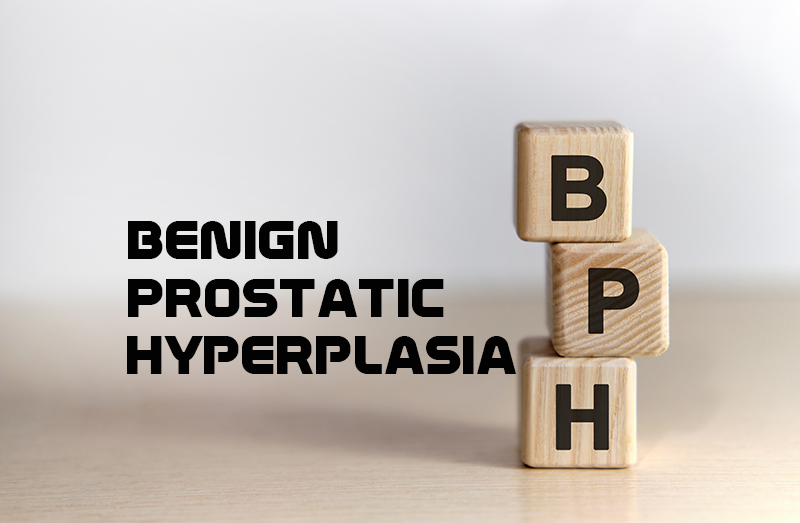A common urology condition among older men, benign prostatic hyperplasia (BPH) causes enlargement of the prostate gland. The enlargement of the prostate gland and its surrounding tissues causes several uncomfortable symptoms. As the prostate gland enlarges, it tends to squeeze the bladder, causing it to become thicker. Over time, the bladder may weaken and lose the ability to empty fully. BPH is benign- meaning it does not lead to cancer. BPH itself may not require any specific treatment, but if the condition causes any specific symptoms, treatment could help. Diagnosing and documenting this urology disorder can be challenging for physicians. Precise medical record documentation is vital for correct coding and billing. With appropriate documentation, medical billing and coding outsourcing companies can help physicians use the correct ICD-10 codes and file claims for adequate reimbursement.
About half of men between ages 51 and 60 have BPH. It is estimated that up to 90 percent of men over age 80 have it. Hormonal changes tend to play a prominent role. Other conditions that can lead to symptoms similar to those caused by an enlarged prostate include – urinary tract infection, inflammation of the prostate, scarring in the bladder and narrowing of the urethra. Several factors can increase the risk of BPH. Men who are – above the age of 50 years, overweight/obese, have erectile dysfunction (ED), who have a family history of benign prostatic hyperplasia and who don’t follow an active lifestyle – have high risk of developing BPH.
Symptoms of Benign Prostatic Hyperplasia (BPH)
The signs and symptoms of the condition may differ from person to person. The severity of symptoms in people who have prostate gland enlargement vary, but symptoms tend to gradually worsen over time. When the prostate is enlarged, it can bother or block the bladder. Frequent or urgent need to urinate is one of the main symptoms. Other related symptoms include –
- Increased frequency of urination at night (nocturia)
- Weak urine stream or a stream that stops and starts
- Inability to completely empty the bladder
- Dribbling at the end of urination
- Difficulty starting urination
The size of the prostate doesn’t necessarily determine the severity of symptoms. In certain cases, some men with only slightly enlarged prostate can have significant symptoms, while other men with very enlarged prostate may have only minor urinary symptoms. In some men, symptoms eventually stabilize and may even improve over time.
How to Diagnose and Treat BPH
Diagnosis of this condition starts with a physical examination and medical history review wherein urologists will ask questions about the symptoms. A medical history review will provide a clear analysis about the specific conditions that can mimic BPH, such as urethral stricture, bladder cancer or stones, or abnormal bladder/pelvic floor function or pelvic floor muscle spasms. Diagnosis tests include – urine test, blood tests and scans. Urine tests are done to measure how well urine is released, and check whether the urethra is blocked or obstructed. Urine tests include – Urinalysis, Post-void residual volume (PVR), Uroflowmetry and Urodynamic pressure flow study. Prostate-specific antigen (PSA) blood tests are used to screen for prostate cancer and check the level of PSA (a protein made only by the prostate gland). BPH scans like – Transrectal Ultrasound, Magnetic Resonance Imaging (MRI) and Computed Tomography (CT) and Cystoscopy – are performed to see the size and shape of the prostate. If the condition is more complex, urologists may recommend biopsy – wherein tissue samples of the prostate are sent for diagnosis to check for chances of prostate cancer. Treatment depends on the size of the prostate, severity of symptoms, age of the patient and his/her overall health condition. Treatment modalities include a combination of medications, minimally invasive therapies and surgery.
ICD-10 codes for Benign Prostatic Hyperplasia (BPH) include –
- N40 Benign prostatic hyperplasia
- N40.0 Benign prostatic hyperplasia without lower urinary tract symptoms
- N40.1 Benign prostatic hyperplasia with lower urinary tract symptoms
- N40.2 Nodular prostate without lower urinary tract symptoms
- N40.3 Nodular prostate with lower urinary tract symptoms
In all cases, benign prostatic hyperplasia (BPH) does not require medical treatment. Urologists may advise patients to have regular checkups to monitor their symptoms and the size of their prostate. Prevention of this condition involves incorporating lifestyle changes, consumption of medications and other treatment modalities in the right manner. Consuming a well-balanced and nutritious diet can help prevent the condition in the long run. Other prevention strategies include – reducing intake of liquids, avoiding or reducing intake of caffeinated beverages and alcohol, training the bladder to hold more urine for longer periods, exercising pelvic floor muscles and preventing or treating constipation.
Urology medical billing and coding can be challenging. Knowing the specific ICD-10 codes related to BPH is critical for providers. Physicians can partner with a reputable medical billing company to ensure accurate and timely claim submissions.




